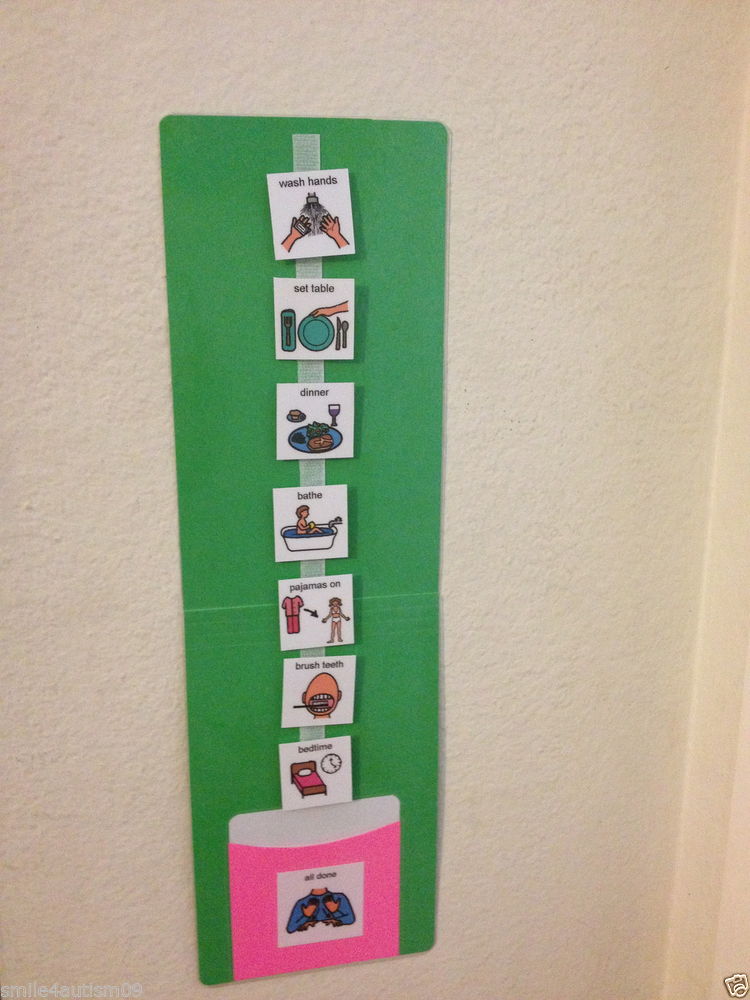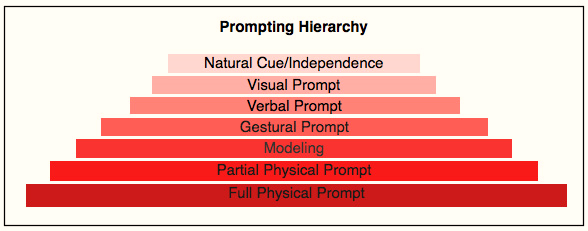

Introduction.
Individuals with an intellectual and developmental disability often require support in completing daily sociological and physiological activities. Therefore, helping individuals who are impacted by these disabilities to acquire these skills is critical to their success to live independently as adults.
avail® is an educational tool that utilizes the principles of Applied Behavioural Analysis (ABA), Video Modelling and other prompting approaches. Providing a research-based personalized programme at the fingertips of individuals with disabilities, support staff, parents, and educators, across the globe.
avail® has been developed from research and professional experience in teaching independent skills, below are some research papers and links that encompasses elements featured within the avail® system.
Applied Behavioural Analysis
The Applied Behavioural Analysis (ABA) focuses on the principles that explain how learning takes place. Jacobson, J.W. (2000) reported that as a whole, ABA has the best-documented outcome data supporting their approach as compared with other methods”.
avail® utilizes key strategies within the ABA, specifically, task analysis, chaining, prompt-fading, and positive reinforcement.
Prompts
Prompts are often defined as “artificial” stimuli that are presented immediately before or after the stimuli that will eventually cue the learner to display the targeted behavior at the appropriate time or circumstance.
Prompts can be “instructions, gestures, demonstrations, touch or other things that we arrange or do” to increase the likelihood that individuals will make the right response (McClannahan &Krantz, 1999).
Video Modelling
Video Modelling derives from the work of Albert Bandura and his concept of social learning theory (Bellini & Akullian, 2007; Bellini, S., & Akullian, J. (2007). He stated that children learn many skills by watching other people perform the skills and then imitating the behaviours. As early as the 1960s, Bandura suggested that watching televised models was intrinsically motivating and had a strong ability to hold one’s attention. He found that new behaviours could be learned from televised models whether or not extra incentives were provided.
In the past, bulky camcorders, VCRs, and televisions were needed to produce and playback videos. Now with advances in technology, this is available using smart devices (Christine Meister & Joyce Salls, (2015).
Visual support
Picture based supports are often used to create picture schedules to create an understanding of a person’s daily events and improving on-task behavior (Bryan & Gast, 2000; Spriggs, Gast, & Ayers,2007)

picture schedule

Pictures can be used as a means of prompting individual children to initiate and completes tasks. Such prompting systems, use pictures to depict a step in a chained response task analysis, shows a finished product or the finished location. Using pictures as a reference has been found to aid individuals to complete difficult tasks such as assembling furniture. (Linda Mechling, 2007). Picture schedules have been documented as beneficial within a working environment for people with intellectual disabilities as reported by Carson, Gast & Ayres (2008). The use of visual supports can also aid students with ASD to be incorporated into “an inclusion model”. (Bucalos, Julie Iberer, 2013)
Audio/ Verbal prompts
A review of 268 Applied Behaviour Analysis journal articles identified that verbal prompts are the most commonly reported auxiliary cues (G.S.MacDuff, 1999). These verbal prompts can also be delivered through technology. One study noted how students would listen to pre-recorded instructions on tapes and complete steps that corresponding to steps of task analysis. Two studies noted that audio prompts effectively cued students to continue working and completing employment-related tasks (Briggst et al., 1990; Davis, Brady, Williams, & Burta, 1992). This use of audio prompting on a mobile device was further documented as an aid by Davies, Stock, & Wehmeyer (2002).
Fading prompts:
While the above teaching strategies focus on creating prompts, a key element is the process of fading back prompts. When creating a prompting aid, we must envision how we can fade out the prompt or reach a level whereby the individual is using the least amount of prompts possible.
Prompt fading is defined as the systematic reduction of a prompt until it is eliminated or redefined as an integrated part of the task, promotes generalization and maintenance of skills. Most-to-least prompting is a common prompt fading procedure used to master new skills. This involved the learner receiving whatever prompt they needed to successfully perform a new skill when instructions begin (Cooper,1987a). Over success teaching, repetition and assessment, the amount of assistance is gradually reduced until no prompts are provided.
In order to reduce prompts, an assessment must be completed to note if learning has occurred. avail® has a built-in guide, that enables assessments and then assists in reducing prompts using Prompting Hierarchy guidelines.

Use of technology in teaching:
The innovation of iPads and smart devices has provided new opportunities for learning and communication for individuals with disabilities. Smart devices are more accessible than traditional PC or laptops, and the individuals enjoy their predictable responses and engaging apps.
It has been identified that individuals with Intellectual Disabilities and ASD can not only achieve significant skill acquisition when taught using mobile technologies but may also rather have the instruction delivered through a mobile device (Shane & Albert, 2008).
This was also supported by Gentry, Wallace, Kvarfodt, and Lynch (2010), they suggested that students demonstrated statistically significant improvement and increased satisfaction in performing daily skills when using the iPods. They also found that students with ASD were easily able to learn using these devices.
Comparison to live Modelling (adult directed/1:1 Modelling):
Adult directed live modelling is a commonly used teaching approach to show an individual how to complete a task or behaviour, where the adult would demonstrate the desired behaviour and allow the child to repeat. (Linda Darling-Hammond et al., 2019)
Charlop-Christy, Le, and Freeman (2000) found that video modelling resulted in quicker rates of skill acquisition and increased generalisation as compared to live modelling. Video modelling also appears to be a more efficient method for teaching skills as it requires less time and training to implement (Graetz, Mastropiera & Scruggs, 2006).
Creating independence:
The avail® revolutionary software allows support staff, parents, and educators to monitor from a distance by receiving notifications when tasks are viewed. This empowers the individual to confidently self-manage their daily events independently, while the parent can safely monitor from a distance. A key element of avail® i.e. video modelling has been found to successfully teach independence via community skills such as purchasing among a group of students: Alcantra, P.R. (1994), Haring, T.G., Kennedy, C.H., Adams, M. J., & Pitts-Conway, V. (1987).
Independence has been observed to be achieved through the use of a video-prompting procedure on an iPod to help instruct a young man with developmental disabilities to complete vocational tasks in a competitive work setting (Van Laarhoven et al., 2009). It is important to keep in mind the various areas in an individual’s life that may benefit from such achievements.
Furthermore, Mechling et al., 2009 found a combination of prompts such as pictorial, auditory and video prompts to be successful in increasing the independent skills acquired such as cooking among students with ASD. This is extremely relative to avail®™ as it provides the ability to use a single method or combination of prompts to adapt to the individual’s ability or desires whilst learning an independent goal.
While the above research supports the strategies used in avail®, it is necessary to research the effectiveness of avail® as a prompting system, that achieved and measures learning. The Irish Research Council is currently exploring this, and we welcome any other studies who wish to conduct similar research.
Kind Regards,
Lisa Marie Clinton
Founder and CEO of avail®
M: +353 874333131
E: lisamarie.clinton@availsupport.com
Website: www.availsupport.com
References:
Alcantra, P. R. (1994). Effects of videotape instructional package on purchasing skills of children with autism. Exceptional Children, 61, 40-55.
Bryan, L. C., & Gast, D. L. (2000). Teaching on-task and on-schedule behaviours to high-functioning children with autism via picture activity schedules. Journal of Autism and Developmental Disorders, 30(6), 553–567. doi:10.1023/A:1005687310346[CrossRef], [PubMed], [Web of Science ®], [CSA]
Carson, K. D., Gast, D. L., & Ayres, K. M. (2008). Effects of a photo activity schedule book on independent task changes by students with intellectual disabilities in community job sites. European Journal of Special Needs, 23, 269–279.
Charlop-Christy, M.H., Le, L., & Freeman, K.A. (2000). A comparison of video modelling with in video modelling for teaching children with autism. Journal of Autism and
Christine Meister OTD, OTR/L & Joyce Salls OTD, OTR/L (2015) Video Modeling for Teaching Daily Living Skills to Children With Autism Spectrum Disorder: A Pilot Study, Journal of Occupational Therapy, Schools, & Early Intervention, 8:4, 307-318, DOI: 10.1080/19411243.2015.1107005
Cooper,J.O.(1987a). Stimulus control.In J.O.Cooper, T.E.Heron,& W.L. Heward (Eds),Applied behaviour analysis (pp.299-326). Columbus, OH: Merrill.
Davies, D. K., Stock, S. E., & Wehmeyer, M. L. (2002). Enhancing independent task performance for individuals with mental retardation through use of a handheld self-directed visual and audio prompting system. Education and Training in Mental Retardation and Developmental Disabilities, 37, 209–218.
Gentry, T., Wallace, J., Kvarfordt, C., & Lynch, K. B. (2010). Personal digital assistants as cognitive aids for high school students with autism: Results of a community-based trial. Journal of Vocational Rehabilitation, 32, 101–107.
Graetz, J. E., Matropieri, M. A., & Scruggs, T. E. (2006). Show time: Using video self-modeling to decrease inappropriate behaviour. Teaching Exceptional Children, 38, 43-48.
Haring, T.G., Kennedy, C.H., Adams, M. J., & Pitts-Conway, V. (1987). Teaching generalisation of purchasing skills across community settings to autistic youth using videodisc Modelling. Journal of Applied Behaviour Analysis, 20, 89-96.
Jacobson, J. W. (2000). Converting to a behaviour analysis format for autism services: Decision-making for educational administrators, principals, and consultants. The Behaviour Analyst Today, 1 (3), 6-16).
Linda Darling-Hammond, Lisa Flook, Channa Cook-Harvey, Brigid Barron & David Osher (2019) Implications for educational practice of the science of learning and development, Applied Developmental Science, DOI: 10.1080/10888691.2018.1537791
Mechling, Linda. (2007). Assistive technology as a self-management tool for prompting students with intellectual disabilities to initiate and complete daily tasks: A literature review. Education and Training in Developmental Disabilities. 42. 252-269.
MacDuff, G. S., Krantz, P. J., McClannahan, L. E. (2001). Prompts and prompt-fading procedures for people with autism. (In C., Maurice,G., Green,R. M. Foxx, (Eds.), Making a difference: Behavioral intervention for autism (pp. 183-194). Austin, TX: Pro-Ed
McClannahan,L.E., & Krantz,P.J. (1999).Activity schedules for children with Autism:Teaching independent behavior.Bethesda,MD:Westview
Mechling, L.C., Gast, D.L. & Seid, N.H. Using a Personal Digital Assistant to Increase Independent Task Completion by Students with Autism Spectrum Disorder. J Autism Dev Disord 39, 1420–1434 (2009). https://doi.org/10.1007/s10803-009-0761-0
Shane, H. C., & Albert, P. D. (2008). Electronic screen media for persons with autism
spectrum disorders: Results of a survey. Journal of Autism and Developmental Disorders, 38, 1499–1508.
Spriggs, A. D., Gast, D. L., & Ayers, K. M. (2007). Using picture activity schedule books to increase on-schedule and on-task behaviors. Education and Training in Developmental Disabilities, 42(2), 209–223.[Web of Science ®]).
Van Laarhoven, T., Johnson, J. W., Van Laarhoven-Myers, Grider, K. L., & Grider, K. M.(2009). The effectiveness of using a video iPod as a prompting device in employment settings. Journal of Behavioral Education, 18 (2), 119–141
Bucalos, Julie Iberer 1974-, “Increasing independence in children with autism spectrum disorders using video self modeling.” (2013). Electronic Theses and Dissertations. Paper 171. https://doi.org/10.18297/etd/171